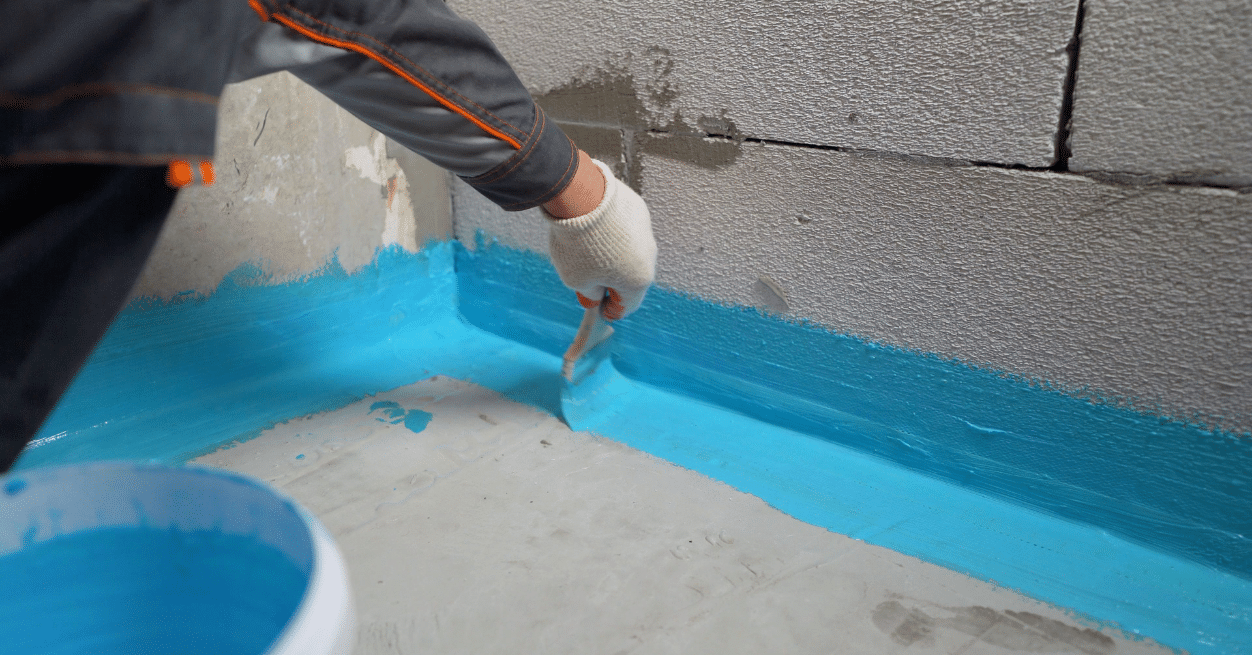
What is Waterproofing?
Waterproofing is the process of making a structure or object resistant to the penetration of water or moisture. It is a crucial aspect of construction and maintenance to protect buildings, foundations, basements, roofs, and other structures from water damage. Waterproofing aims to prevent water intrusion and the associated problems such as mold growth, structural deterioration, and damage to belongings.
Key methods and materials used in waterproofing include:
Sealants and Caulks: Sealants and caulks are applied to joints, gaps, and cracks to create a watertight seal. They are flexible and can prevent water from seeping into vulnerable areas.
Waterproof Membranes: Waterproof membranes are sheets or coatings applied to surfaces to create a barrier against water. Common materials include bituminous membranes, rubberized asphalt, and liquid-applied membranes.
Waterproof Coatings: Waterproof coatings are applied to surfaces like concrete, masonry, or wood to create a protective layer that repels water. These coatings can be elastomeric, acrylic, or silicone-based.
Drainage Systems: Proper drainage is essential for preventing water buildup around foundations, basements, and other vulnerable areas. Drainage systems may include French drains, gutters, downspouts, and slope adjustments to direct water away from the structure.
Grading and Landscaping: Proper grading involves shaping the landscape around a building to ensure that water flows away from the structure. Landscaping techniques, such as the use of swales or berms, can also help manage water runoff.
Waterproofing Additives: Waterproofing additives can be incorporated into concrete mixes or other construction materials to enhance their water-resistant properties. These additives may include admixtures like waterproofing agents or crystalline waterproofing materials.
Sump Pump Installation: In basements or crawl spaces prone to water accumulation, sump pumps are installed to remove excess water and prevent flooding. They pump water away from the structure to a designated drainage area.
Cavity Drain Systems: Cavity drain systems are applied to basement walls and floors, creating a controlled space for water to travel. Water is then directed to a drainage system, preventing it from entering the interior space.
Waterproofing is crucial in various applications, including residential and commercial construction, infrastructure projects, and below-grade spaces like basements and tunnels. It helps maintain the integrity of structures, prevent water-related damage, and create healthier and more durable living or working environments. The specific waterproofing methods employed depend on the type of structure, local climate conditions, and the intended use of the space.
Learn more about our attorneys:
https://cwilsonlaw.com/meet-the-team-chad-t-wilson-law-firm-pllc-insurance-attorney/
Follow us on Social media:
https://beacons.ai/chadtwilsonlaw
Contact our Chad T. Wilson Law Firm Office Locations to Schedule a free Consultation.
Chad T. Wilson is an attorney whose firm specializes in property insurance disputes.
« Back to Glossary Index


